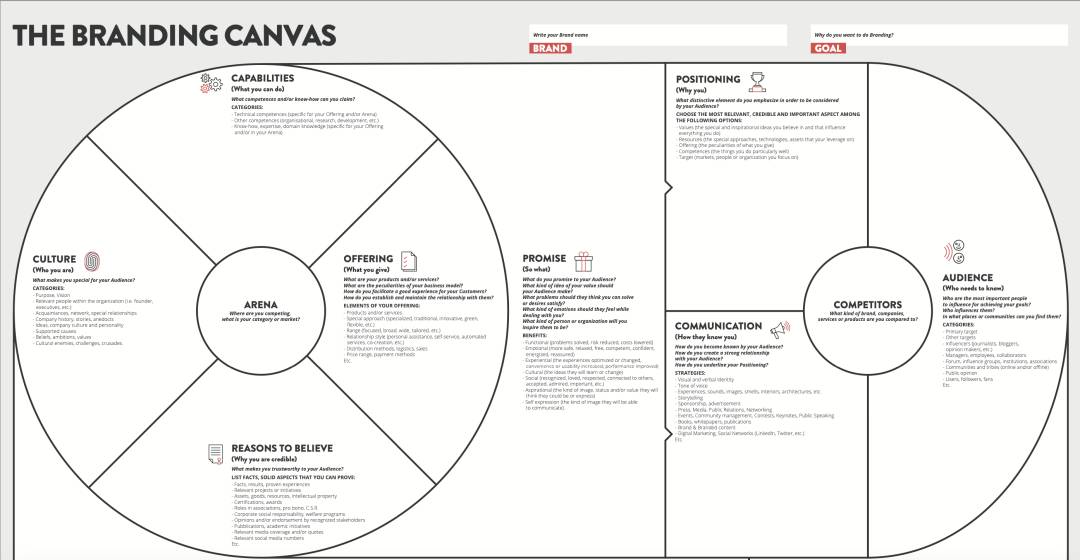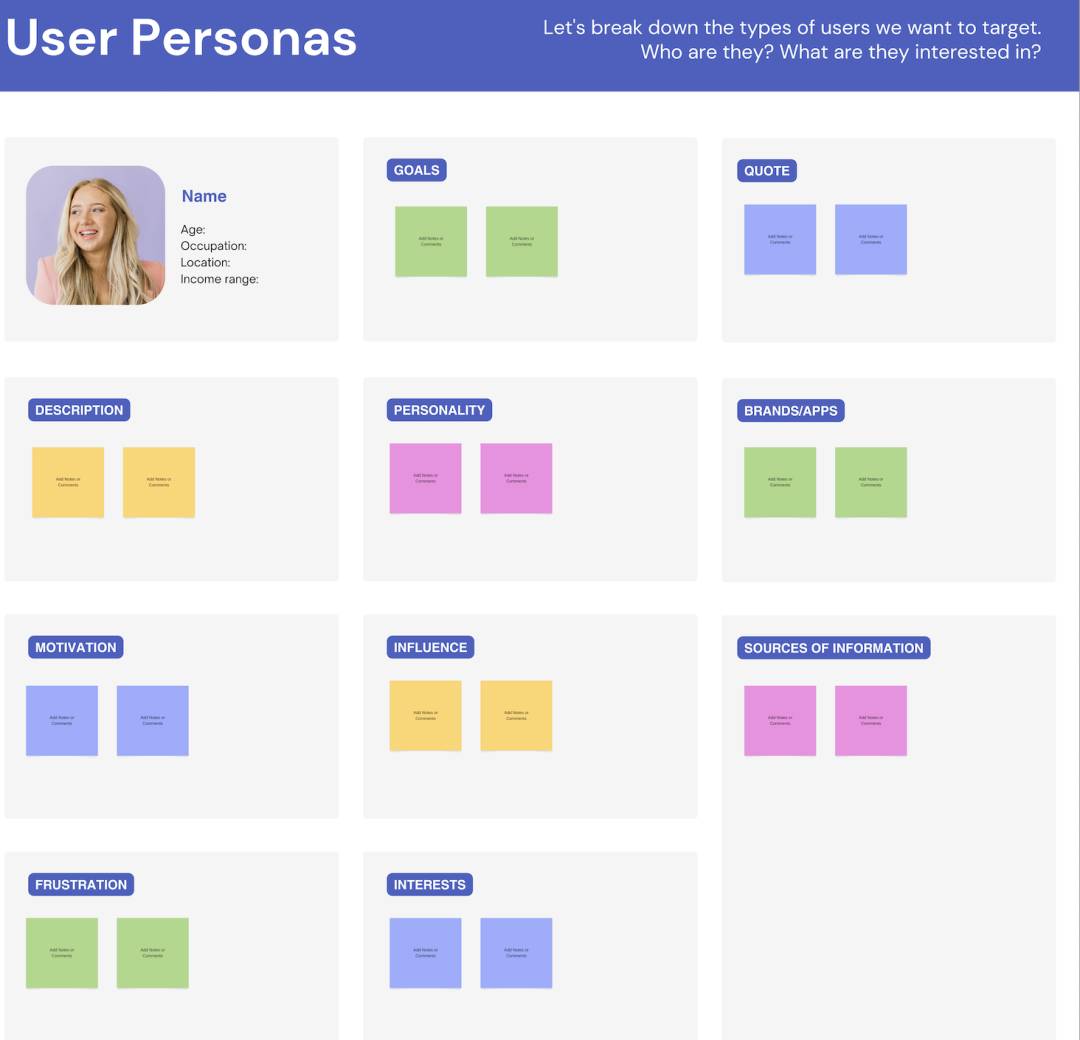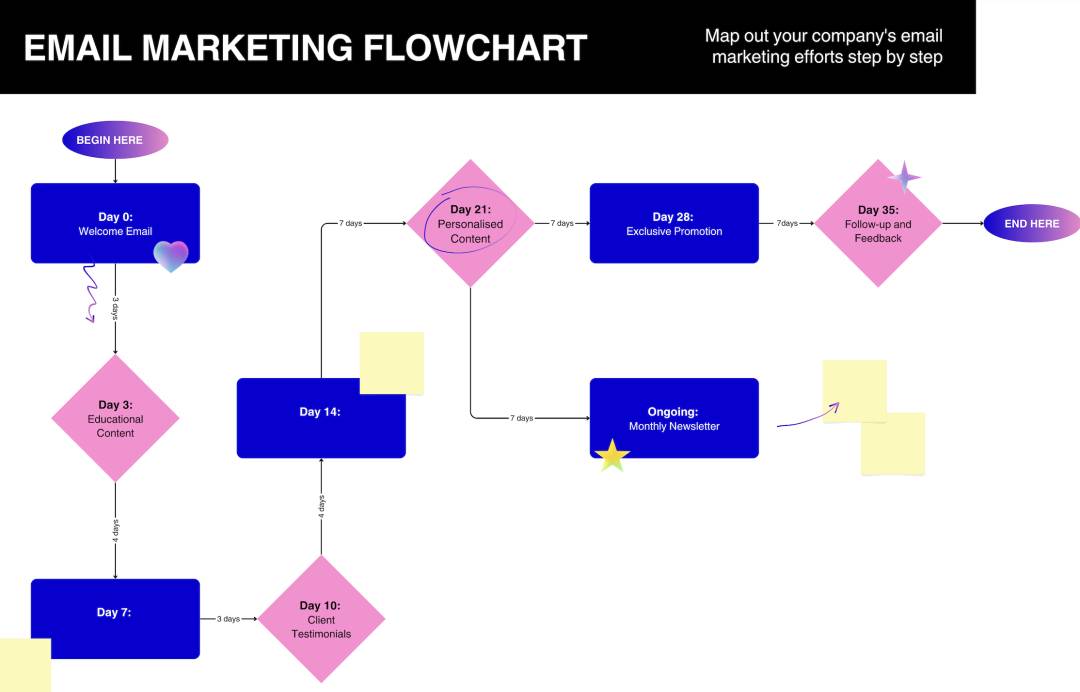The Only Self Storage Marketing Guide You Need
Marketing is all about communicating the value of your service to the end customer, and in the self-storage industry, this is a crucial aspect that is often overlooked. Before diving into specific marketing strategies and tactics, it's essential to understand the broader marketing concepts that form the foundation of a successful self storage marketing approach. When you get to the end of the guide, you’ll be confident enough to know what next steps to take to market your self storage business efficiently.
For nearly a decade, we've tried countless strategies - some worked brilliantly, while others didn’t. But each experience taught us invaluable lessons that we've compiled into this comprehensive marketing guide.
Related
How to Start a Self Storage Business in 11 Steps
Understanding Self Storage Marketing
Branding and Image
In the self-storage industry, branding goes beyond just a logo or colour scheme; it's about creating an emotional connection and building trust with your target audience. Consumers perceive the value of a company based on how they feel about it and how other customers feel. When a brand makes a customer feel a certain way, they not only become loyal to the brand, but they also become advocates, telling their friends and family about their positive experiences, leading to organic growth and brand recall.
To truly connect with your audience and communicate on a deeper level, self-storage companies must understand their customers' pain points, values, and lifestyles.
Practical Next Step - Branding Canvas: You can use a brand canvas to get started on defining and articulating your brand identity, values, and positioning. A brand canvas helps create a visual representation of your brand essence, ensuring consistent messaging and experiences across all touchpoints.

Target Audience Segmentation
Effective marketing requires a deep understanding of your target market, and in the self-storage industry, this can vary greatly depending on the business model and location. Some self-storage companies may cater primarily to students or young professionals who require short-term rentals, while others may focus on families, retirees, or small businesses that typically seek long-term storage solutions.
By segmenting their target audience, self-storage companies can tailor their marketing messages, channels, and strategies to resonate with their specific customer base. For instance, a self-storage facility near a university might leverage social media platforms popular amongst students, while a facility in a retirement community might prioritise direct mail or local print advertising.
Practical next step - Customer Personas: To effectively segment your target audience, create detailed customer personas that represent your ideal customers. These fictional characters should encompass demographic information, lifestyle details, pain points, and storage needs. Tools like surveys, interviews, and demographic data can help you build accurate personas, enabling you to tailor your marketing efforts to the specific needs and preferences of each segment.

Customer Service and Experience
In an industry where competition is fierce and switching costs are relatively low, exceptional customer service and experience can be a powerful differentiator for self-storage companies. From the initial inquiry to the move-out process, self-storage companies should strive to reduce customer effort and create a seamless, hassle-free experience.
This can include user-friendly online reservation systems, offering flexible payment options, and providing responsive customer support. By prioritising customer experience, self-storage companies can increase customer satisfaction, reduce churn, and foster brand loyalty, ultimately leading to higher customer lifetime value. Customers may forget what you say, but they won't forget how you make them feel.
Impact of Improved Customer Service: Studies have shown that companies which revamp their customer service approaches can see their Net Promoter Score (NPS) increase by up to 40%, highlighting the significant impact of customer service on overall business performance.

What is the best place to advertise self storage?
Paid Advertising
It’s crucial for self storage companies to use paid advertising as part of their marketing mix to reach potential customers at different stages of the buyer's journey.
Platforms like Google Ads and Facebook Ads offer powerful targeting capabilities that allow self-storage companies to reach specific demographics, locations, and even interest-based audiences.
While paid advertising may be effective for some companies, it's important to know that it's also a long and expensive process to get right.
Example: A self-storage facility located in an urban area could leverage paid search to target individuals who have recently relocated to the city or those who have expressed an interest in decluttering or home organisation on the platform.
When implementing paid advertising campaigns, it's essential to carefully craft compelling ad copy and visuals that resonate with the target audience and highlight the unique selling points of the brand. Additionally, self-storage companies should continuously monitor and optimise their campaigns based on performance metrics such as click-through rates, conversion rates, and cost per acquisition.
Search Engine Optimisation (SEO)
In today's digital age, having a strong online presence is essential for self-storage companies to attract potential customers actively searching for storage solutions. Why? Because most people searching for something look to Google and trust the first few links that are suggested by it. Search Engine Optimisation (SEO) is a crucial component of this strategy, as it helps ensure that a company's website ranks highly in relevant search engine results. Some helpful tools include SEMRush, Google Search Console, AHrefs.
Related
Self Storage SEO: The Ultimate 2024 Guide
Case Study: Stashbee Stashbee has effectively leveraged SEO to achieve impressive results. By focusing on relevant keywords, optimising our website for mobile users, ensuring fast loading speeds, Stashbee has garnered over 1 million monthly impressions. Our comprehensive SEO strategy has significantly boosted our online visibility and customer acquisition.
Get Qualified Leads
Join the waitlist to get high quality leads straight to your inbox
Get Qualified LeadsContent Marketing
Content marketing is a powerful tool for self-storage companies to establish themselves as thought leaders, build trust with their audience, and drive organic traffic to their websites. By creating and sharing valuable content that addresses the pain points and interests of their target customers, self-storage companies can position themselves as trusted advisors, rather than just service providers. Content marketing includes blogs, social media, email marketing etc. We’ve expanded on the latter below.
Discussing things that aren't related just to storage is also important. Not everyone will want to read content merely about storage, so mix things up. Discuss topics in your niche, make it fun and exciting - truly get your creative juices flowing!
Example: A self-storage company targeting small business owners could create a blog series offering tips and advice on topics such as efficient packing techniques but could also talk about the team behind the company, what they’re up to in their free time - who they are as people, thereby increasing the connectivity and relatability between the audience and the brand.
This approach not only keeps the brand top-of-mind but also establishes the company as an authority in the industry while adding relatable human elements, which can lead to increased brand loyalty and customer retention. Remember, the purpose is to talk not just about the product or service but also the story behind it and the stories behind the people who built it.
Social Media Marketing
In today's digitally connected world, social media platforms are where brands showcase their voice and personality to engage, interact, and forge meaningful connections. For self-storage companies, platforms like Facebook, Instagram, Twitter, and LinkedIn present invaluable opportunities to showcase their facilities, share valuable content, and cultivate a vibrant community around their brand.
Effective self storage social media marketing goes beyond broadcasting promotional messages; social media allows you to humanise your brand and foster a sense of trust and familiarity with your audience.
Check out what we’re doing with Stashbee’s social media that’s helped us grow our audience and create a memorable brand.
Related
Self Storage Social Media Marketing
Email Marketing
Email marketing remains a powerful and personal channel for self-storage companies to nurture leads, retain customers, and drive conversions. Building an email list is the first step, and this can be achieved through various incentives, such as offering discounts, free resources, or exclusive content in exchange for email sign-ups.
Striking the perfect balance between informative content and promotional messaging is key to capturing subscribers' attention and encouraging desired actions. It’s important not to constantly sell via emails but also include information customers actually want to read. For example, in the Stashbee Newsletter, we provide our audience with helpful money saving tips.

Word-of-Mouth and Referral Marketing
While digital marketing is crucial in today's landscape, self-storage companies should not overlook the power of word-of-mouth and referral marketing. Word-of-mouth recommendations from satisfied customers can be one of the most effective and cost-efficient forms of marketing, as people are more likely to trust the opinions of their friends, family, or colleagues.
To leverage word-of-mouth and referral marketing, self-storage companies should:
- Encourage Reviews: Encourage satisfied customers to leave reviews on platforms like Google, TrustPilot, and the company's social media pages. Positive reviews not only build trust with potential customers but can also improve local search rankings.
- Referral Program: Implement a referral programme that incentivises existing customers to recommend the self-storage facility to their friends and family. This could include offering discounts, free rental periods, or other rewards for successful referrals.
- Engage on Social Media: Actively engage with customers on social media platforms, responding promptly to inquiries and concerns, and fostering a sense of community around the brand.
Example: Referral Programme Success A self-storage company in Manchester introduced a referral programme offering a £25 discount for both the referrer and the new customer. This initiative led to a 20% increase in new customer acquisitions within the first three months.
Related
7 Ways to Boost Lead Generation for your Storage Business
Signage and On-Site Marketing
While digital marketing is crucial, self-storage companies should not overlook the importance of offline touchpoints, such as on-site signage and marketing materials. Well-designed, eye-catching signage that clearly communicates the brand's unique value proposition can help attract new customers and reinforce the brand's presence in the local community.
On-site marketing materials, such as brochures, flyers, and posters, can also be effective in educating potential customers about the facility's features, pricing, and promotions. These materials should be visually appealing, easy to understand, and aligned with the overall brand identity.
Building Partnerships and Collaborations
Self-storage companies can also explore opportunities to build strategic partnerships and collaborations with complementary businesses or organisations in their local area. These partnerships can provide mutual benefits, such as cross-promotion, co-marketing opportunities, and access to new customer segments.
Example: A self-storage facility could partner with a local moving company, offering discounted rates or promotions to customers who use both services. This not only provides added value to customers but also helps to reinforce the self-storage brand and increase brand awareness within the local community.
Website Optimisation
In today's digital age, a self-storage company's website is often the first touchpoint for potential customers. As such, it's crucial to optimise the website for a seamless user experience and to ensure that it effectively communicates the brand's value proposition.
Key areas of website optimisation for self-storage companies include:
- User Experience (UX) Design: Ensure that the website is visually appealing, easy to navigate, and provides clear calls-to-action (CTAs) that guide users through the conversion funnel.
- Mobile Optimisation: With an increasing number of users accessing websites on mobile devices, it's essential to ensure that the self-storage company's website is mobile-friendly and optimised for smaller screens.
- Online Reservations and Payment: Implement user-friendly online reservation and payment systems to reduce customer effort and provide a seamless experience.
- Content and Messaging: Craft compelling website content that highlights the unique selling points of the self-storage facility, addresses common pain points and concerns and reinforces the brand's value proposition.
- Conversion Rate Optimisation (CRO): Continuously test and optimise website elements, such as headlines, CTAs, and forms, to improve conversion rates and maximise the return on investment from website traffic.
Data Analytics and Insights:
In the ever-evolving landscape of self-storage marketing, data analytics has emerged as a powerful tool for understanding marketing performance, customer behaviour and making informed decisions. Platforms like Google Analytics provide invaluable insights into website traffic, user engagement, and conversion metrics, enabling you to identify the most effective marketing channels and optimise your strategies accordingly.
By tracking key performance indicators (KPIs) such as website traffic sources, lead generation metrics, and customer lifetime value, self-storage companies can make data-driven decisions that maximise their marketing ROI and drive long-term growth.
Advanced Marketing Techniques
Integrating advanced marketing techniques can give self-storage companies a competitive edge. These techniques include:
- Interactive Content: Use interactive tools like storage calculators, virtual tours, and augmented reality features to engage customers and help them visualise the storage options available.
- Chatbots and AI: Implement chatbots on the website to provide instant responses to customer inquiries and guide them through the decision-making process. We reccomend intercom AI
- Personalisation: Utilise data analytics to personalise marketing messages and offers based on customer behaviour and preferences.
Related
7 Strategies to Increase Conversion Rates for Self Storage Businesses
Future Trends in Self Storage Marketing
As the self-storage industry continues to evolve, several trends are shaping its future:
- Sustainability: Increasingly, customers are looking for eco-friendly options. Self-storage companies that prioritise sustainable practices will stand out.
- Technology Integration: Advancements in technology, such as AI and IoT, will continue to enhance the customer experience and operational efficiency. For some additional insight, look at what extra space storage is doing in this space.
- Flexible Solutions: Offering more flexible storage solutions will become increasingly important as customers seek convenience and adaptability.
Summary and Next Steps
With the increasing competition in the self-storage industry, it is imperative to adopt a comprehensive and dynamic marketing strategy. Leveraging SEO can significantly boost your visibility and lead generation at a fraction of the cost of traditional advertising. However, it’s important to have a mixed strategy consisting of paid ads, SEO, content marketing etc. Since building a prominent SEO presence to generate high quality leads takes years, why not just leverage Stashbee’s already existing audience? Incorporating advanced marketing techniques, focusing on customer-centric service, and staying ahead of future trends will position your self-storage business for sustained growth and success. It’s never too early to start marketing your self storage website. Start today.
Get Qualified Leads
Join the waitlist to get high quality leads straight to your inbox
Get Qualified LeadsMeher
Written 14th Aug 2025
